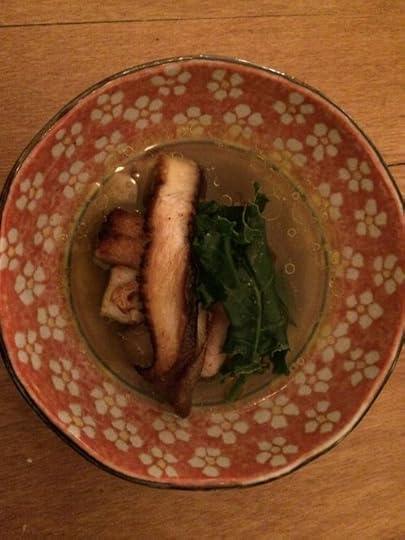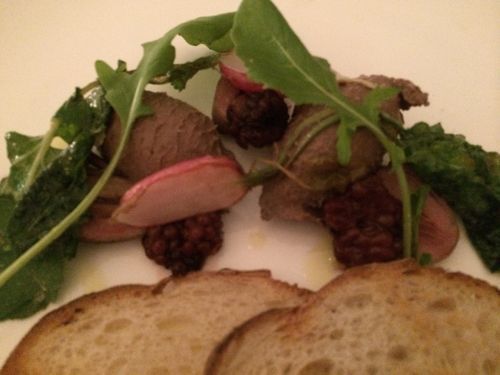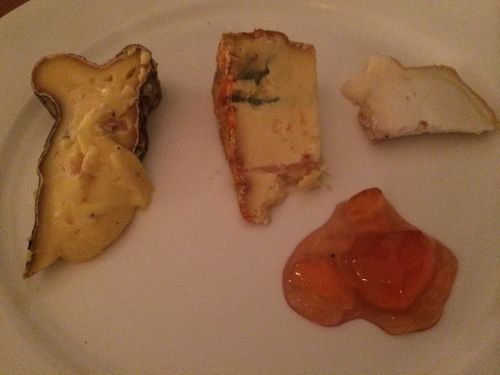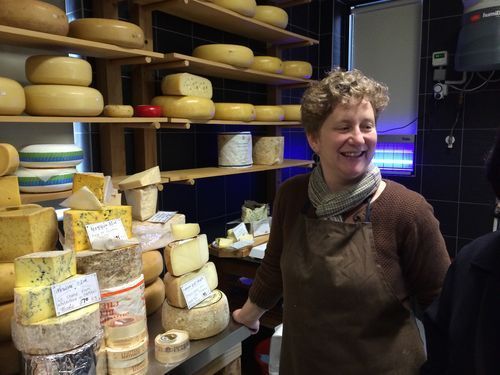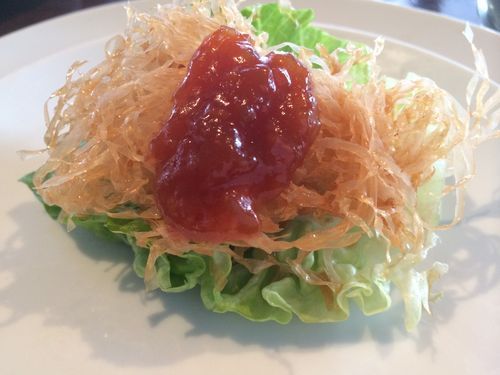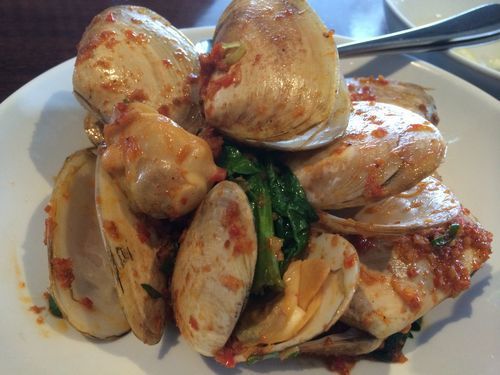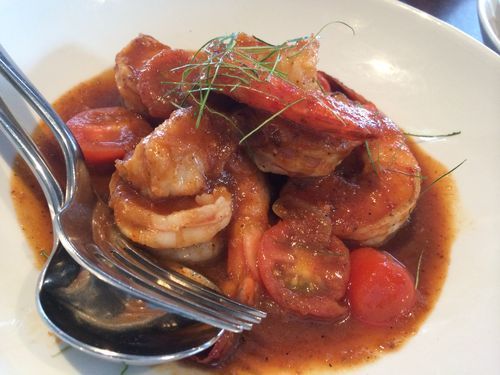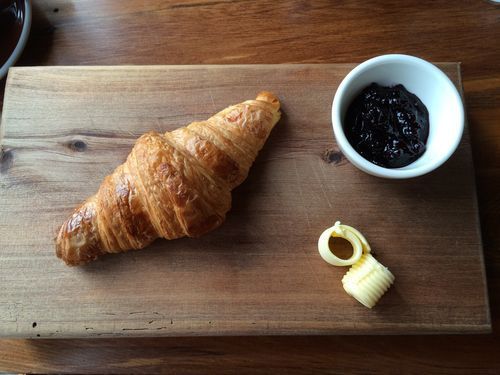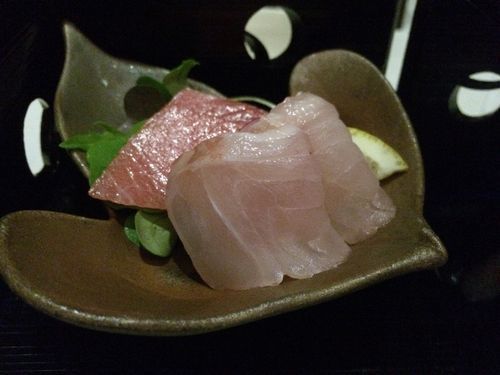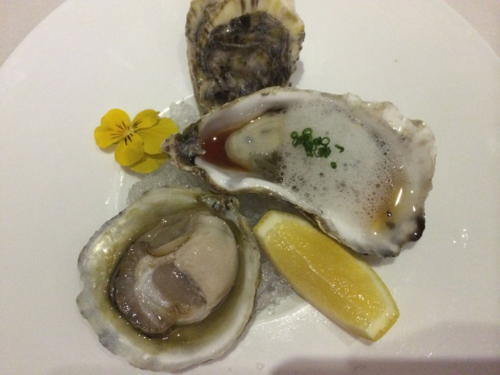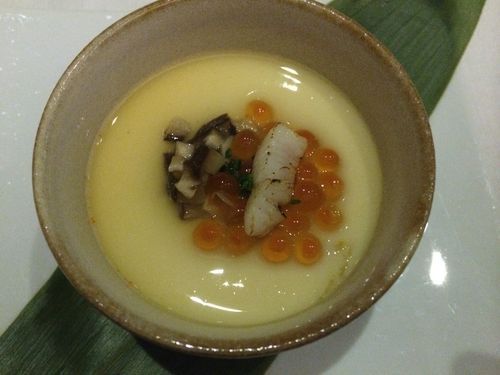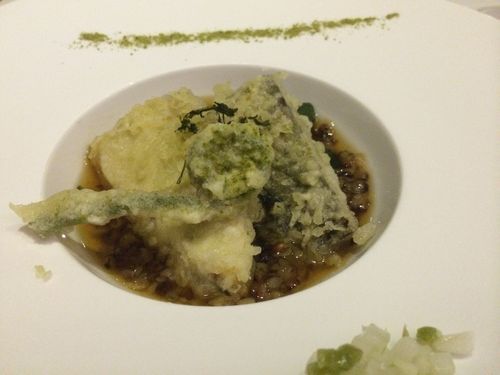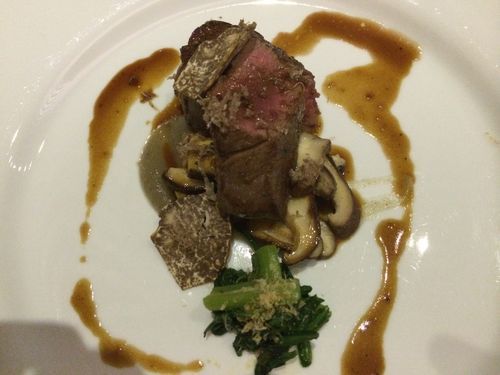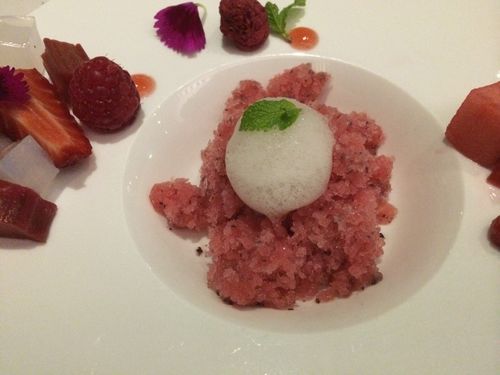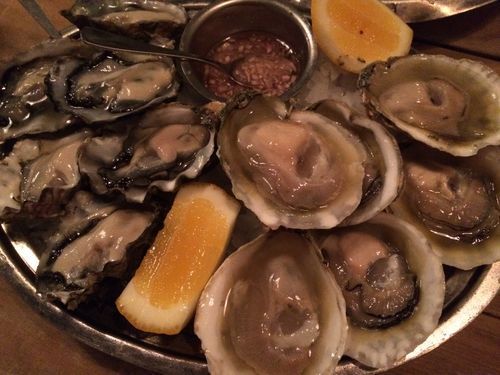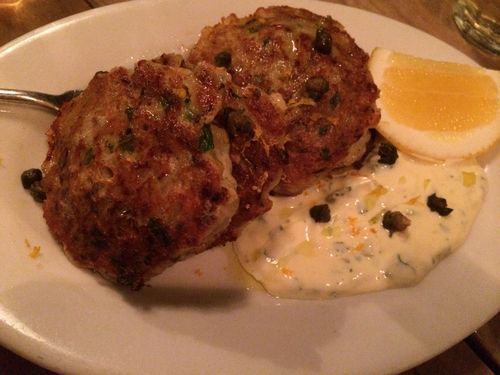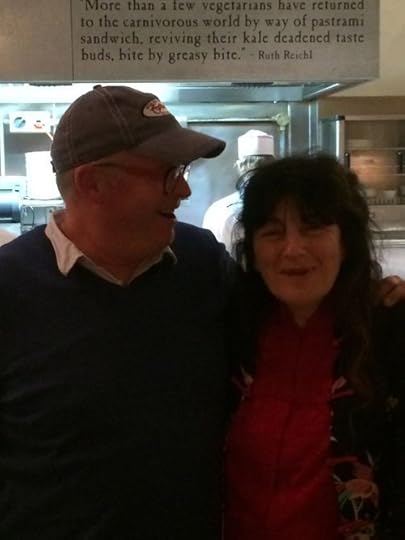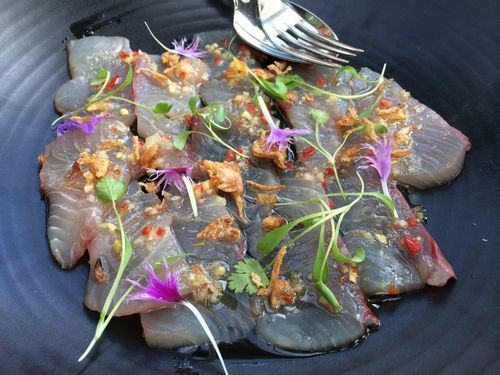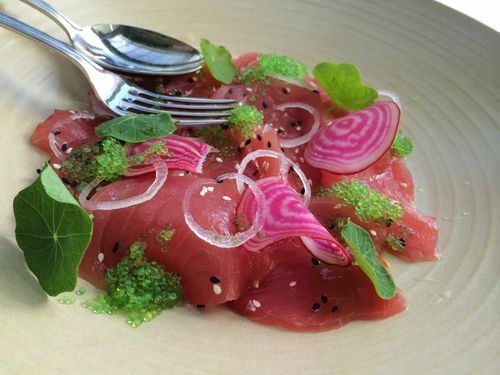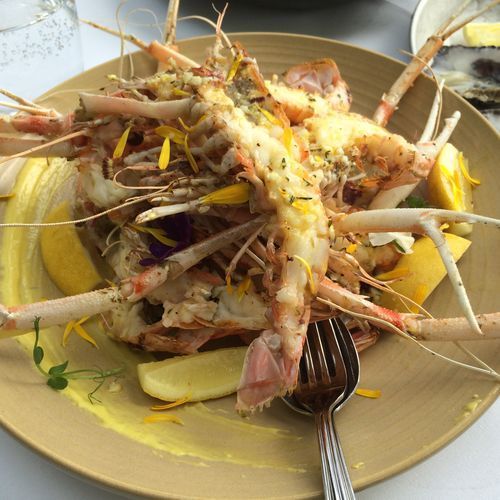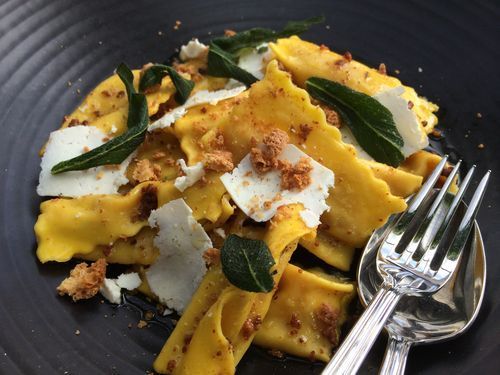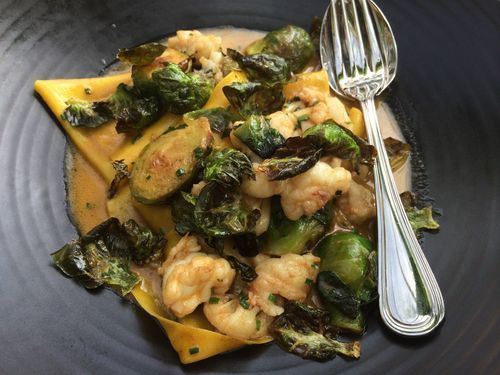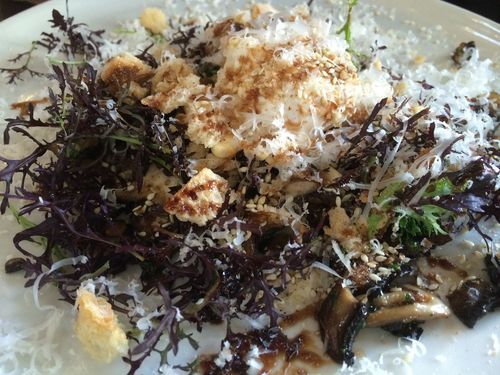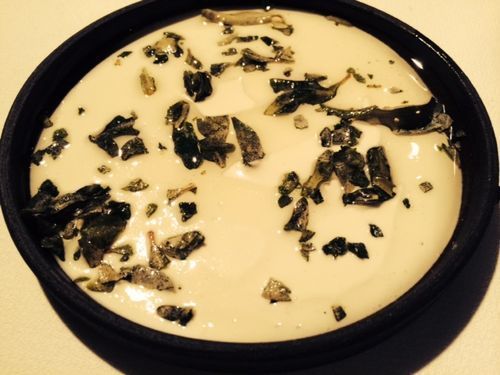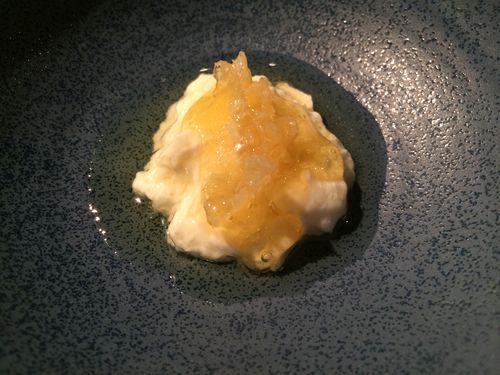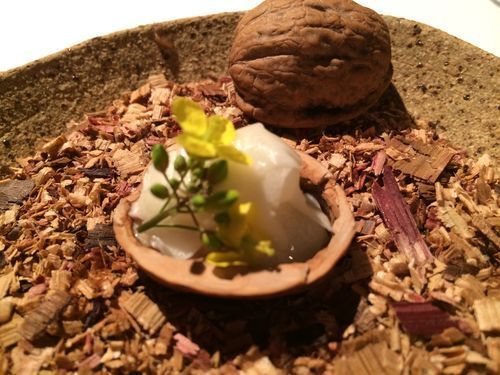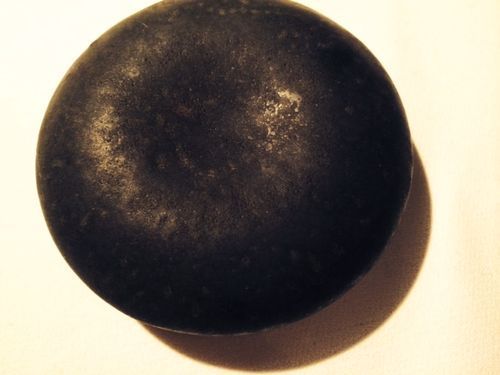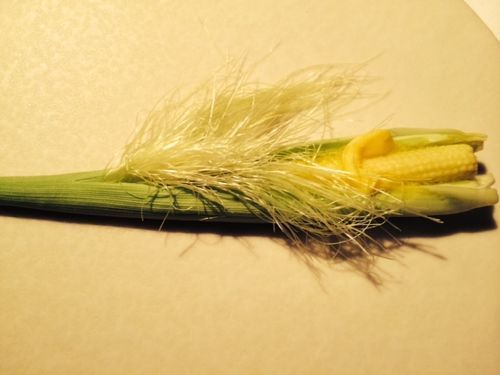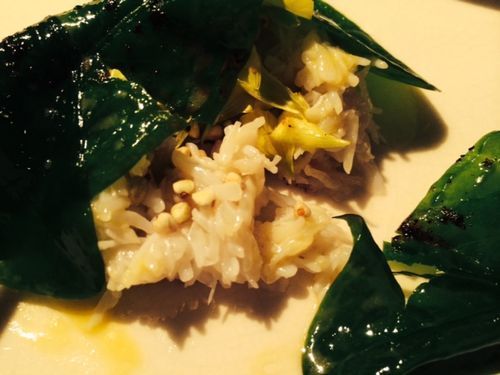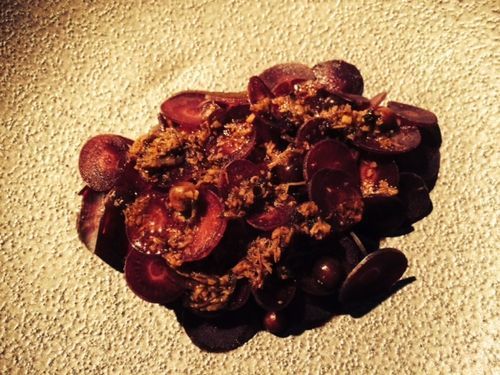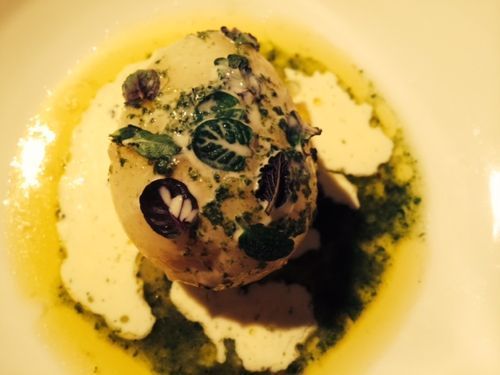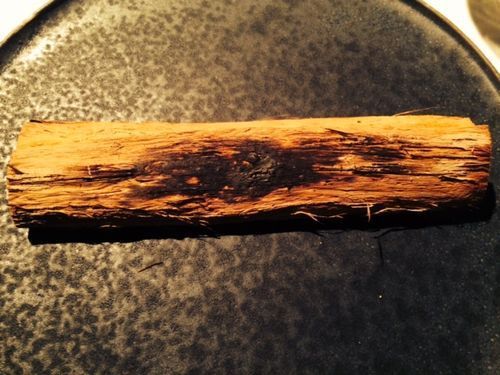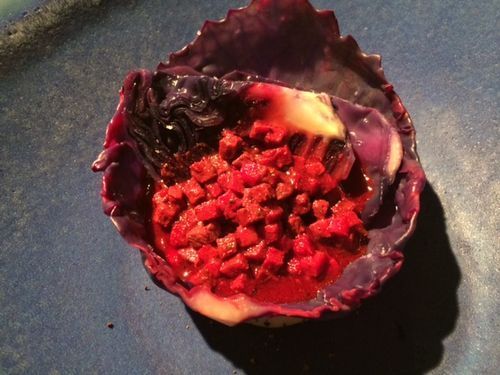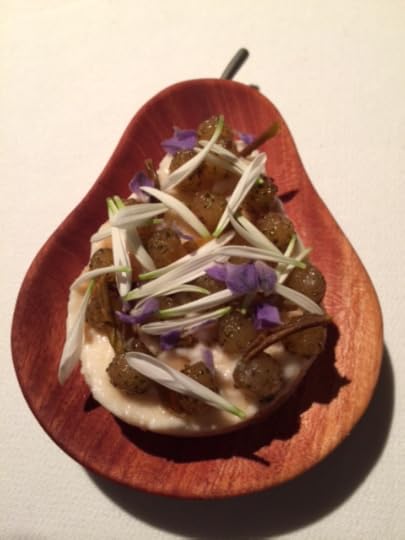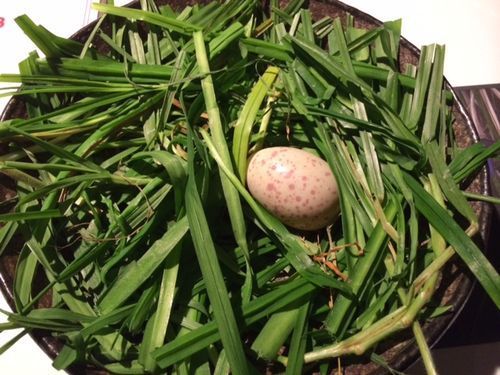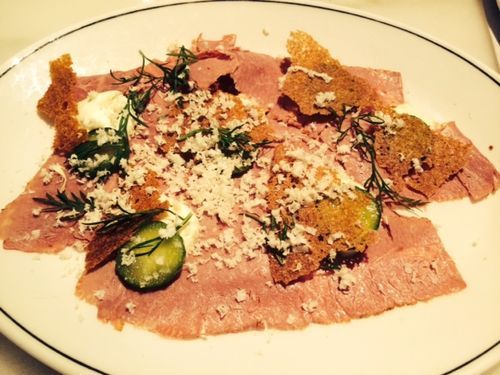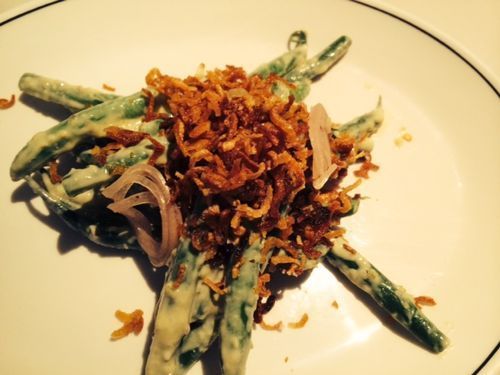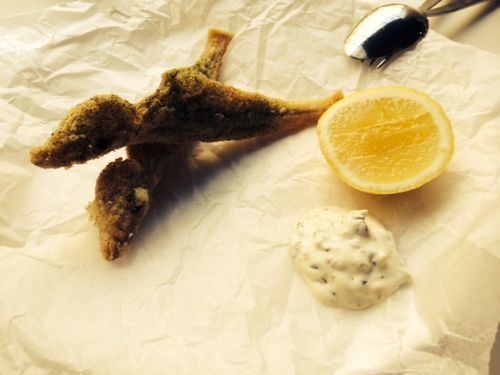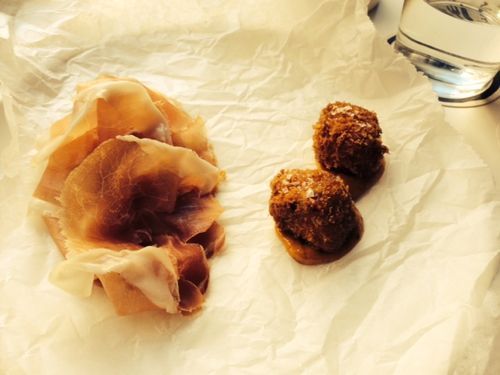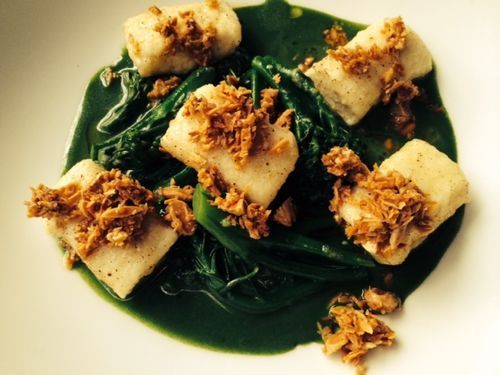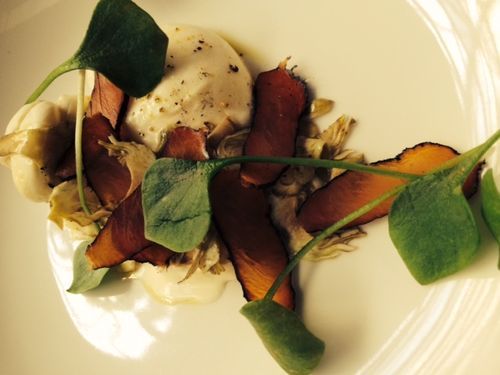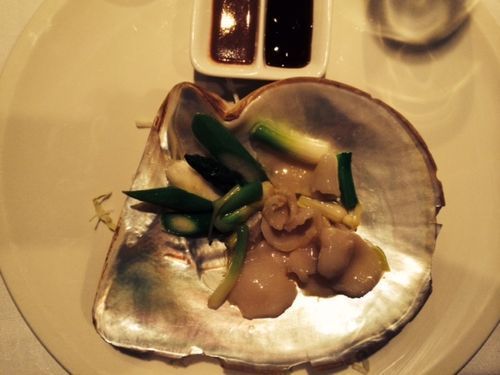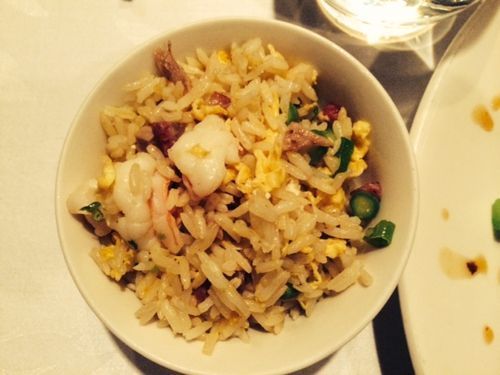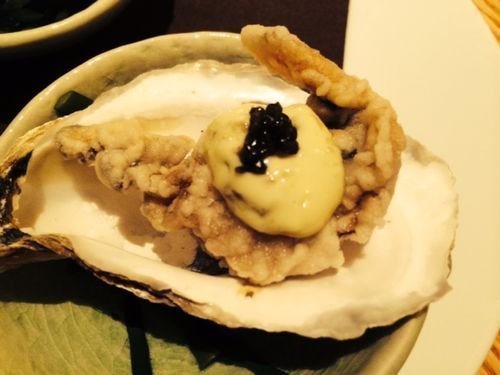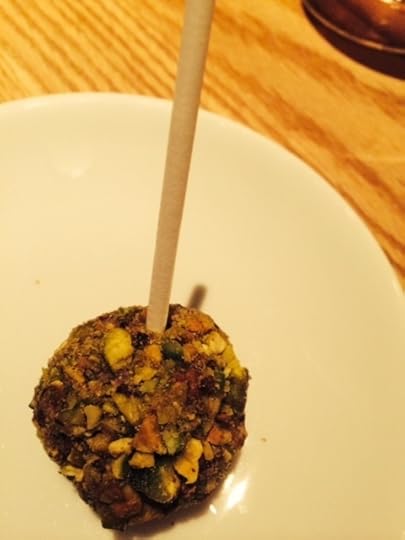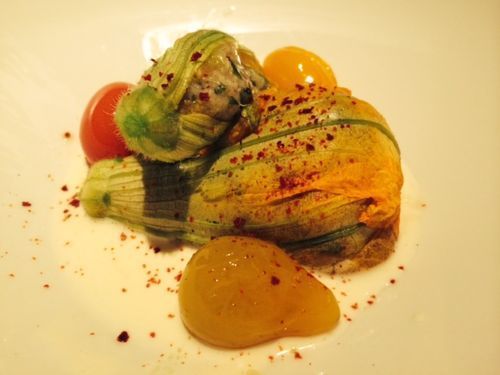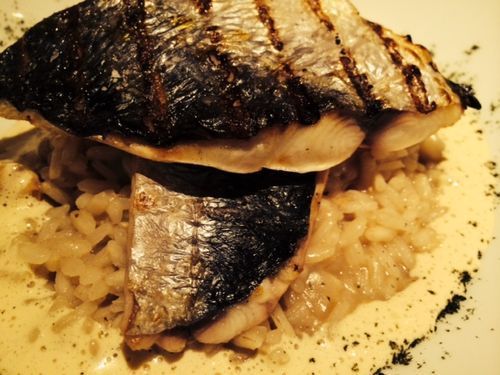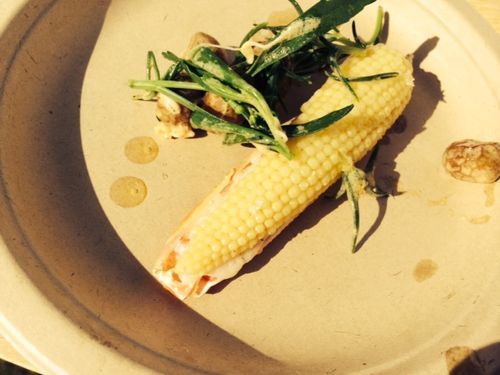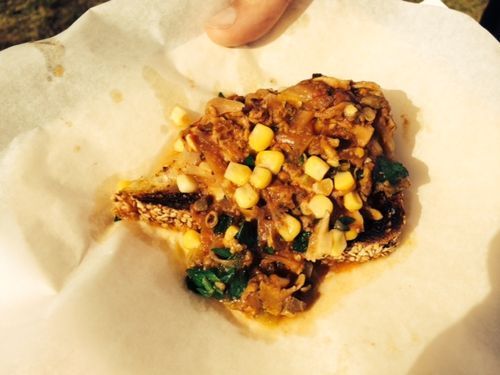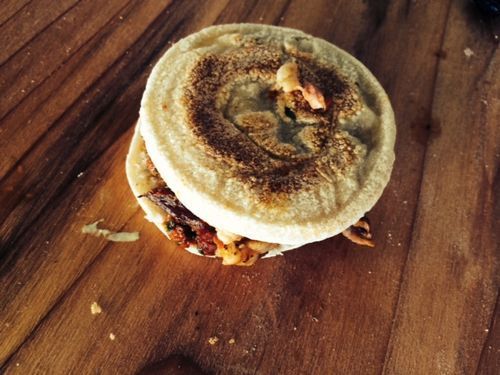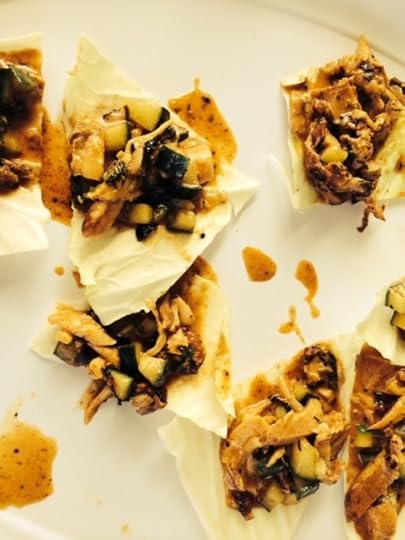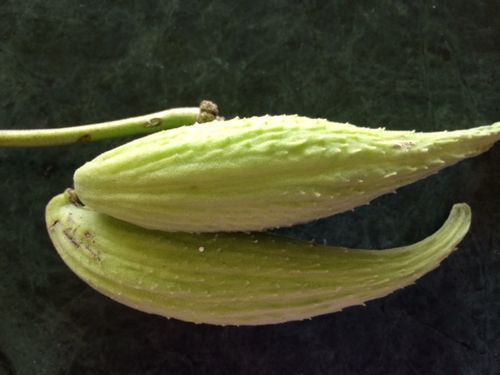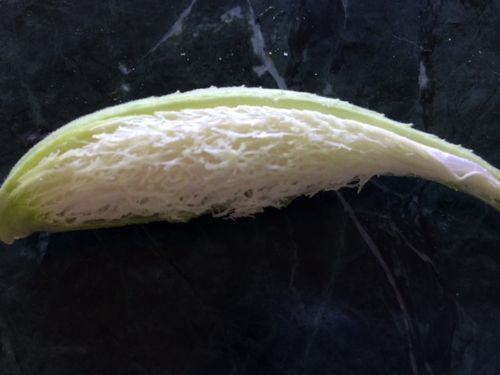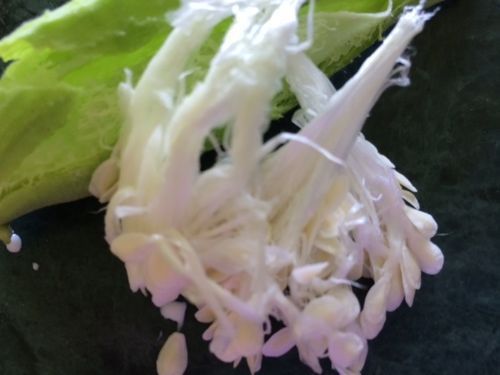Ruth Reichl's Blog, page 22
August 31, 2014
Notes from New Zealand: Christchurch
Christchurch is heartbreaking and inspiring, in equal measure. New Zealand's second largest city is still recovering from the devastating earthquake of 2011. Huge swaths of the city have disappeared leaving gaping hulks of vanished buildings standing on every street like ghosts from the past. You walk the streets, haunted by the rubble of tumbled buildings.
And yet there is a spirit of revival here. A cathedral made of cardboard. Shops inside containers. Restaurants in trucks or tucked inside tiny reclaimed spaces. I walk the city, wandering in and out of places, awed by so much that I see.
And the food!
My first meal is at Shop Eight, where chef Alex Davies is cooking eloquent fare on a couple of burners in a kitchen the size of a postage stamp. He has no oven. The furniture is made from recycled wood. The flowers on the table are wild, plucked from now abandoned gardens, tucked into jaunty jars. The products - even the wines - are all local. I loved absolutely everything I ate, from bread served simply with a berry vinaigrette to a fantastic plate of local cheeses.
This was my favorite dish:
Terakihi, a New Zealand fish, with the meatiest, fattest, most delicious shiitake mushrooms I've ever experienced, and a single pungent leaf of kale. The great joy here was the broth: intense, singing the praises of every vegetable that went swimming through it.
Those radishes are fried in duck fat, the chicken liver hearts are just-cooked, and the pate is rustic, gutsy, completely appealing.
Pig head ramen. Need I say more? Alex gets a pighead every week, fashioning various delicious dishes from the meat.
Have you ever seen a more appealing plate of cheeses? The one on the right is a local sheep cheese, the one in the middle is Mt. Grey Barnes Blue, and the one on the left was rich, soft and delightfully barny. The jelly is made from loquats.
The cheeses come from Canterbury Cheese Mongers, where Sarah and Martin Aspinwall are baking fantastic sourdough bread and encouraging (and affining) the products of local cheeesemakers. (That's Sarah.)
Lunch one day is at the fabulously named King of Snake. We start with the equally well-titled hairy oysters - wrapped in kataifi, slathered with spicy mayo, a crisp briny mouthful.
Then there are these tuatua - meaty local surf clams haunted by a powerful XO sauce.
And chili prawns - sweet, spicy, extremely sexy.
But the restaurant that most exemplifies the spirit here has to be the just-opened Brick Farm, set in an almost vacant lot. Johnny Moore, whose beloved Smash Palace is a boisterous bar and burger place housed in a truck, has reclaimed a bit of land next to the farmers market downtown. The three story-building sits alone on an otherwise desserted downtown block. It's a handsome space, all brick, wood and sunlight, filled with charming details. An antique cash registers sits on the counter, guarding platters of pastry. Huge slabs of wood are used as plates. Outside, planters create a small urban farm. Inside, locals gather for brunch on weekend mornings, for raucous bistro food at night.
Places like this are turning the new Christchurch into a city filled with possibility. After the earthquake people here were eager to go out to eat, reconnect with their neighbors, prove that their city was still alive. Restaurateurs stepped in, opening in the midst of devastation, offering hope.
Up next: visiting Paradise. A trip to the country around Christchurch (and lots of terrific wine).
August 30, 2014
A Japanese meal in New Zealand
My last dinner in Auckland was at the tranquil Cocoro: a lovely, langorous meal that was utterly Japanese in its restrained simplicity.
It began with these two oysters: one a Bluff oyster, too delicious to serve with anything more than a bit of salt and lemon. The other a Kaipara topped with a subtle yuzu foam.
Next came a little box that opened to reveal a series of small treats: the tuna at the top, velvety curls of raw shrimp, a sharkskin grater with fresh wasabi and a bit of pickled ginger. At the bottom, both white and dark soy sauce.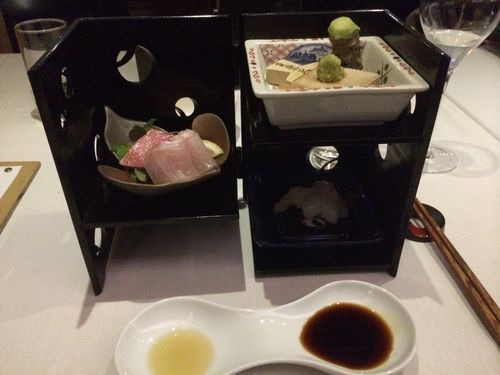

Now there was seaweed-cured snapper wrapped around a nugget of grilled eggplant, topped with a frisk of turnip and served in a puree made from more grilled eggplant.
Next there was a tiny dish of chawanmushi filled with scallop and crab, and topped with salmon roe:
Kingfish and fiddlehead fern tempura came plunked into a broth rich with seaweed and spinach. The real treat here - for me at least - was the buckwheat and spinach at the bottom. The entire world in a bowl- ocean, forest, field and stream.
Beautifully grilled beef, very rare, surrounded by shiitakes, truffle, Jerusalem artichoke puree and just a tiny hint of bitter greens.
Dessert was simple and completely refreshing: granita of umeboshi and shiso, with bits of berries and a strong hint of yuzu. A perfect ending for a lovely meal.
August 29, 2014
Notes from New Zealand: Auckland
This is such a beautiful city, perched on the water, the air fresh, green volcanos everywhere you look. Some lucky people take the ferry in from Waiheke Island, commuting in to work with orcas frisking around the boat, leaping, diving. Others live in wonderful Victorian homes, perched on hills, views of water on all sides.
Life here seems casual, easy. First night in town I am whisked off to Depot, the most rollicking, raucuous restaurant, where genial Al Brown plies me with wonderful wines and fantastic food. Almost before we're seated platters of oysters arrive.
New Zealand oysters are not like those of other waters: they’re brinier, meatier. We have Tio Points, with their steely character, creamy Mahurangis and the Te Matukus which are both sweet, salty and creamy. (My favorites are Bluff Oysters, which are just going out of season; they have a crisp character, a bit like the texture of giant clam, and I'm ecstatic each time I encounter one.)
There are clam fritters - I can’t stop eating them - and spicy lamb ribs, big meaty things with potent skordalia, and the kinds of salads not meant for dainty dieters. This is big food, for big eaters; you are meant to have fun. And finally we eat pastrami from Al’s other place - Federal Deli - which actually gives classic New York delis a run for their money.
I’m amazed to come halfway around the world and find this written on a wall. But did I say this? I can’t remember when.
Lunch the next day is at Soul Bar. Overlooking the water, it's filled with extremely chic people giving each other the eye. This is a grown up restaurant, running smooth as silk. You sit down, relax, instantly knowing you're in good hands. The food - as you can plainly see from the king fish above and the tuna below - is beautiful. It is also impeccably prepared. Every one of these dishes tasted even better than it looks.
The fish and scampi were delicious, but it's the pastas that really impressed me. Pumpkin agnolotti were filled with roasted pumpkin, bathed in brown butter and edged with curls of ricotta salata and fried sage. It's a classic dish, but I've never had a better version.
I love these plump, floppy little ravioli too. They're filled with goat cheese that's been sparked with orange peel and topped with grilled scallions and various permutations of peas. Simple. Elegant. Delicious.
And this: scampi with brussels sprouts. Underneath, sheer sheets of pasta. Over it all, a rich shrimp bisque. Sweet, sour, soft, chewy: a serious mouthful.
Here even a simple dish of broccolini comes spiked with chili, underlined with preserved lemon - its rough edges muted.
Breakfast in Auckland isn't your usual fare either. While people in the rest of the world are starting the day with toast, with cereal, with porridge or pastries, Aucklandites have different ideas. At the lovely little Ortolana people are tucking into far more interesting food. Mushrooms, poached egg, scattered cheese, greens.
And this: gnocchi, cheese, eggs, peas and an entire garden of spring greens. It's as if Auckland is saying - the world is filled with so many wonderful things to eat. Why limit the options?
And then there is the Japanese food. Stay tuned.....
August 27, 2014
Pickled Purple Daikon
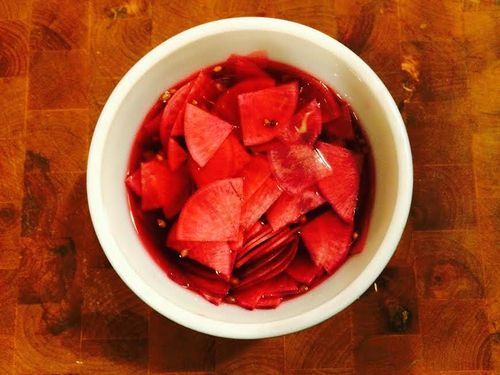
The day before I left for Australia, I found a beautiful purple daikon radish at the farmer’s market.
I didn’t have time to eat it before I left. So I did the obvious thing: made it into pickles.
For the first few hours, the radish’s incredible purple tie-die color lasted. But eventually it gave way to the pickling liquid, and the vinegar turned everything a brilliant beetish purple. Less startling - but still incredibly lovely.
Pickled Daikon
1 large purple daikon radish, sliced
3/4 cup water
1 1/4 cup unseasoned rice vinegar
splash soy sauce
1/4 cup sugar
1 teaspoon salt
thumb-sized piece of ginger, smashed with back of a spoon
dried chile
Black peppercorns
Coriander seeds
Warm the liquids with the sugar and salt in a small nonreactive pot, just until the sugar dissolves.
Put the thinly-sliced daikon and ginger into a pretty bowl along with the chile, peppercorns and coriander seeds. Allow to cool to room temperature and then refrigerate.
I imagine that this will be good for about two weeks - but we'll see when I get back from New Zealand.
August 26, 2014
Notes from Melbourne 2: Attica

Melbourne is food obsessed. To walk down the streets of this city is to encounter lines of people waiting - for coffee, for ice cream, to get into all the hot restaurants that take no reservations. Chinatown is packed with people, and if you want to eat well, just get into the longest line you see. It will be good, because people here care, deeply, about what they eat.
But if you really want to understand what Melbourne is all about, there’s no better place to do it than Attica, the strange and wonderful restaurant that Ben Shewry runs. There’s not a restaurant like this anywhere in the world - and I doubt there’s another city which would offer it this amount of loving support.
Because this restaurant is set on redefining the entire relationship you have with restaurants. It is the Marcel Duchamp of restaurants, a place that demands that you do more than arrive expecting a pleasant experience, one that asks you to use your mind as well as your mouth. If all you’re looking for is pleasure, this is probably not the place for you. The food is wonderful, the wines impressive and the service could not be more appealing, but everything about this place is intended to stretch your thinking.
You enter. The dining room is dark, the table bare - a blank stage, spotlit, waiting for the actors to appear. The first thing you get will be a glass - but a glass so light, it is almost as if it does not exist, as if the wine itself is hovering in air. A statement.
Then comes the bread - made with an ingredient whose name meant nothing to me. “It tastes a bit like cocoa,” says the waitress, in her difficult to understand accent. Before the evening is over many beautiful people will have offered you food in a dozen different dialects. This seems deliberate, as if the chef is saying, “This is what Australia is. We are a nation of immigrants.”
There is butter, as yellow as a daffodil, and a lovely heap of salt. And there is a yogurt-like concoction, filled with dried saltbush, a fascinating herb totally new to me.
Now a little dish arrives filled with milk curd. A waiter appears, holding a long honeycomb and scoops some honey out. I frown. I loathe honey. I eat it anyway, discovering as I go that I’ve been wrong: this honey is not achingly sweet, but completely lovely. Am I bewitched? Is this honey special? Is it the moment? I’m not sure, but I happily scoop up every bite.
A procession of tiny tastes appears. A walnut holding a walnut puree and a silky fold of mushroom, delicate as a butterfly wing.
A little black dish, smooth against the palm, holding the tiniest carrots, each one lightly pickled, but tasting mostly of the earth.
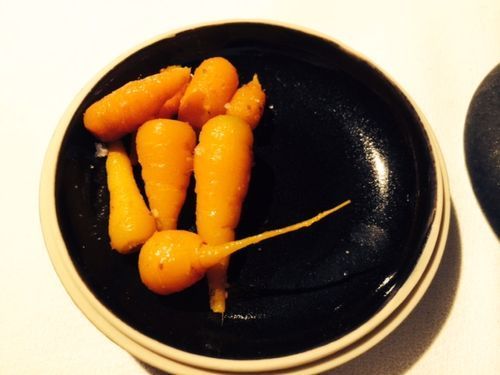
An ear of corn, so tiny it would fit right into a doll’s house, the flavor so vivid I find myself eating the silk itself. I've been drinking an Australian Riesling (Zelo ‘Unico’ 2014 from Adelaide Hills), and as I finish the last drop it resonates gorgeously with the buttery softness of the corn.
Sommelier Banjo Plane pours out a new wine -Jauma Autumnal Sun 2011 - McLaren Vale, and I take a sip while contemplating the bright green leaf, the color glowing, that sits before me. I worry the leaf with a fork, and it falls away to reveal a heart of pure snow crab. The leaf is sour, the crab sweet. It is simplicity itself, but it takes my breath away.
Now there is a strange pink wine, slightly thick in color. More forceful than your ordinary charming rose, this Attica x Pyramid Valley ‘Pink Wine’ 2012 from Caterbury, New Zealand is exactly right with the latest dish, a version of steak tartare. These are ingredients I've never before encountered: kangaroo, pickled purple carrots, bunya bunya nuts, berries. The flavors leap across each other, each bite different than the next, and I find myself taking a bite, thinking about it, taking another. Pausing.
Shewry’s most famous dish is the potato, which he cooks in the earth in which it was grown. Mint. Herbs. But mostly the pure taste of potato, and a texture - somewhere between soft and dense - that defies the ordinary nature of a potato. Ceci n’est pas une pomme de terre. With it there is not wine, but "cleansing ale" from Tasmania, which underlines the unprentious simplicity of the potato.
The meal unfolds, dreamlike. Occasionally I watch small groups get up and disappear. Where are they going? And then it is my turn and I find myself outside, where the chef is waiting to show me not only the garden, but the composter as well. Ben opens it up:all the scraps and uneaten food have been transformed into something like loam. I put my hand into this new dirt, which smells faintly of mushrooms. It seems almost magic.
This modest New Zealander was raised in a wild part of the country. As we talk I find that Shewry is a man of amazing modesty, more comfortable talking about his staff and his dreams for them than he is talking about himself. He seems slightly stunned by his own success, determined to do good rather than make good.
Inside again, there is Moon Marsanne 2010 from Nagambie waiting at the table. A waitrees appears with a little package that looks like nothing so much as a piece of a tree. Inside this paperbark wrapping is whiting, topped with pearl meat. A marriage of forest and ocean. Pure. Clean. Utterly delicious.
The most dramatic presentation of the night is an entire red cabbage, its large ruffled leaves a deep purple. The dish, named 142 Days on Earth is an homage to the venerable vegetable. Inside, another mixture of meat, berries, seeds - all utterly unfamiliar to me - and I stretch (unsuccesfully) to identify the ingredients. The flavors ricochet around my mouth, tempered by the Sorrenberg Gamay 2013 from Beechworth. My apologies for the photo; by now it is after 1 a.m. and I am stunned with food, with wine, with the entire experience.
Now there is a small procession of desserts:
Gingered pears with ice cream, served with Maidenii. What's Maidenii? A local Vermouth, made with, among other things, hand picked wormwood, strawberry gum, river mint, sea parsley and wattleseed. Of course.
Finally this playful candy egg appeard. Filled with caramel. Served in a little grass nest. I love the eloquence of this ending: a nature note, a reminder of the garden, and a nod to childhood, when we all learn to eat.
August 25, 2014
Notes from Melbourne 1

My first taste of Melbourne: a plate of oysters at the counter at Cumulus. Brinier than any American oyster, crisper too, each one like a little gulp of the ocean. Hello!
Cumulus is a lovely introduction to the food of this city. Casual and friendly, it takes its food (and its wine) very seriously. The waitress will hunker down with you over the menu, considering the options. Should you have the fried cauliflower? Yes indeed; sizzling with Middle Eastern spices, it makes you wonder why you've never had this dish before. Cauliflower was born to fry!
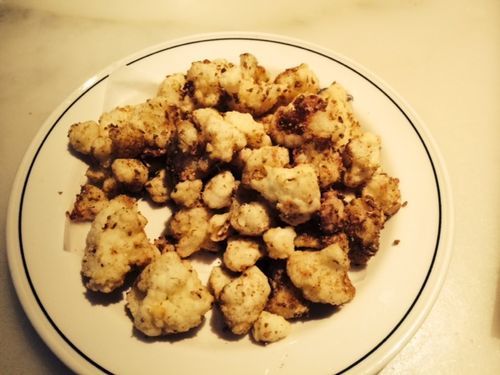
The woman next to me is eating roasted pumpkin that's been slathered with pomegranate molasses and topped with shards of cheese, uttering little moaning sounds that make me sorry I didn't order that as well. But I'm happy with my house-made pastrami, shaved paper thin, served with terrificly sour pickles, horseradish cream, and crisps of rye that shatter at a touch. What makes this sing, though, is that dusting of fresh horseradish.
I loved these silky green beans too, in their chunky hardboiled egg mayonnaise and their topping of fried shallots.
People here don't talk about Pei Modern- but they should. I absolutely loved my (admittedly very large) lunch. It began with this delicately fried whiting, served simply on a crumpled piece of paper.
Went on to the most wonderful little chunk of fried headcheese with a ruffle of culatello on the side:
and then a shower of dishes. The lightest little gnocchi, scented with almonds, kept from floating into the air only by that wonderful green sauce.
Burrata topped with miners lettuce - a juicy green succulent - and smoky slices of house-cured fish. The textures here were remarkable, the soft cheese snuggling up against the powerful severity of the fish, the gentle juiciness of the greens.
Suft clams in a smoked dashi broth, dotted with caviar and tiny nasturtium petals. Pure delicious luxury, a new interpretation of surf and turf.
But the tour de force of this meal was this: an entire grouper tail, so gently smoked the fish was still sweet, soft and tender, clinging to the bone. It came away in large tender chunks.
Dinner at Flower Drum - a venerable restaurant, wonderful in its old fashioned graciousness. Space between tables, dignified waiters, food served with care and a certain amount of pomp. This is classic Cantonese: pristine ingredients, properly cooked and beautifully served with excellent wines.
My favorite moment of the evening was this first bite, pearl meat with scallions. (Pearl meat is the main muscle of the Pinctada maxima, the huge pearl oysters which are harvested in July and August. Its simplicity, its pure clean flavor, reminded me of extremely tender abalone.)
The other high points were crab:
Peking duck - so properly presented that even the hoisin sauce next to the pancake had been slightly warmed....
and what was possibly the most elegant fried rice I've ever eaten....
Other memorable moments in Melbourne, included a very fun lunch at Chin Chin, the raucously mad Thai restaurant on Flinders Lane, and a fantastic dinner at Moon Under Water.
I was on stage at Moon Under Water speaking with sommelier Campbell Burton (Som of the Year) and the wonderful Virginia Trioli, so I didn't photograph the meal, but I loved every bite. The high point was the Aylesbury duck - rare roasted breast, confit leg - paired with quince and an entire medly of toasted grains. The wines Campbell chose- all Spanish - were impressive. I especially liked the 2010 Equipo Navazos La Bota de Vino Blanco "Florpower", which was served with the artichoke, scallop and black truffle soup.
And one day, walking along the street, I stopped in at Primavera for a salted caramel chocolate chip gelato of remarkable subtlety.
But the high point of the trip was dinner at Attica. It was truly remarkable. Coming up next......
August 20, 2014
My Dinner at Elan
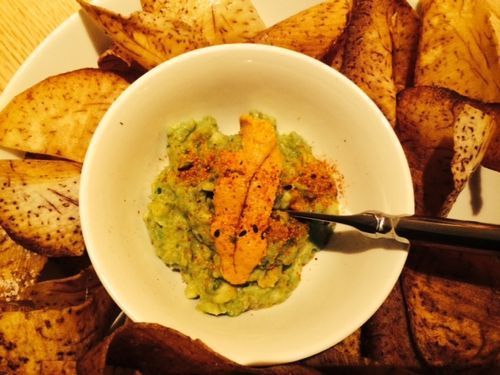
Sea urchin guacamole? I was skeptical. How is it possible for the delicate flavor of sea urchin to survive the onslaught of heat? How could the soft pillowy texture not disappear into all that avocado mush?
But that's what's so great about David Waltuck: he knows what he's doing. One taste of this and you say, "How come I never thought about putting wasabi into guacamole?" It's the perfect heat for all those avocados. The sweet richness of the urchins comes shining through. And somehow - I'm not quite sure how - the roe does not disappear into the vegetable. It's a great dish.
The fried oyster had that same quality: it tasted like an oyster in a crackling package, rather than something fried withthat happened to be seafood. The caviar remoulade on top: pretty perfect.
This is the dish everyone's talking about: the foie gras pop. (Well, they're also talking about the foie gras burger with bacon and too many other ingredients, which I could not bring myself to try.) I was less impressed with this; it's a party trick, a talking point. A big ball of foie gras mousse with a heart of figs and a coating of pistachios. What's not to like? So much excess; so few bites.
Impossible to take a pretty picture of this, but I loved finding a zucchini blossom that was not, for once, fried into flavorlessness. Lightly stuffed, surrounded by tomatoes and plunked into a little puddle of lemon creme fraiche, it tasted like the flower that it is. Fresh, bright. Lovely.
"General Tso's sweetbreads." A tangle of sweetbread, leeks, chiles, and onion in a lightly citric vinegar sauce. If only you could order this in from your local Chinese take-out!
But my favorite dish of the evening might have been this:
Grilled mackerel with a risotto made with dashi broth, laced with clams and plunked into a yuzu-scented sauce. It's not tricky, but it is original and the flavors are bright, the char of the fish perfectly accented by the tang of the yuzu. And you know what? That risotto made a perfect breakfast the next morning.
I loved David Waltuck's cooking at Chanterelle, and I'm so glad he's back in this pleasantly understated room. He seems liberated by the casualness of Elan. The food is not the same, but hte spirit reminded me of the original Chanterelle, before it moved to Tribeca and shouldered the burden of being the restaurant where downtown people went when they wanted a grown up meal.
August 18, 2014
Playing with Fire
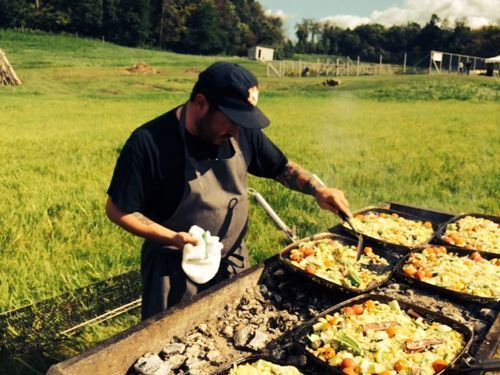
The weather was glorious. The food was fantastic. The chefs were happy - well, everybody was.
A group of American and Canadian chefs gathered yesterday in a field in the Hudson River Valley( just outside of Hudson, New York), to grill food, share ideas and raise money for the FarmOn! Foundation. These multi-chef events are often disappointing. This one was definitely not.
A few highlights:
Jeremy Charles, of Raymonds in St. John's Newfoundland. Everybody was talking about his dish, Canadian Snow crab topped with the most minusucle ear of corn and the loveliest sea greens. This picture does not do it justice: the corn was the size of a child's pinky, fresh and delicate, underlining the pristine sweetness of the corn.
April Bloomfield's whelk scungilli with tomatoes, peppers and corn on garlic bread: everything you expect from April. An astonishing explosion of flavors and textures.
Tigelle with goat and harissa, from Rob Gentile, of the wonderful Buca, and Bar Buca in Toronto. An intense little sandwich, rocking with flavor.
Matt Jennings, of Townsman in Boston, was serving the best tomatoes I've had this season, mingled with bits of eggplant, really great Parmesan and topped with a gorgeous squiggle of whipped basil cream.
Jamie Bisonette and Lee Cooper of L'Abattoir in Vancouver had chickens whirling on a spit outside their tent. They shredded them, tossed them in an intense Southeast Asian sauce and served them on little bits of cabbage. The flavors danced. They also had this season's great peaches (and if you haven't had a peach this year, what are you waiting for?), on grilled flatbread with chicken livers. Chicken livers love peaches.
Zak Pelacio and Jori Jayne Emde picking the pig from Climbing Tree Farm. They served the pig on roti, , with pickled red cabbage, herbed yogurt and lots of herbs. But the don't miss event at this booth wasn't the pig itself - fantastic as it was - but their southeast Asian succatash, the vegetables tangled in a spicy homemade fish sauce and vinegar mixture. I couldn't stop eating it.
Meanwhile Sean Brock (up top), was happily grilling a mixture of hominy and tiny vegetables, rhapsodizing about the quality of the vegetables. They were.... great.
August 14, 2014
How To Cook a Perfect Egg

There's no beating a gently-cooked egg. You’ll certainly get a silkier curd with slow cooking, but the real boon is flavor: like the difference between an egg from your own chicken and an egg from an assembly line, slow cooked eggs just taste better. They’re more deeply themselves.
Alice B. Toklas cooked her eggs in a double boiler, using lots of butter - and plenty of time. The eggs are fantastic, but the process takes patience. If you're not up for that, consider coddling your eggs.
A friend just gave me a set of extremely pleasing glass egg coddlers. The steel handles do double-duty as clamps, so they don't leak. Almost without thinking - in a lot less than 40 minutes - you can butter the glass, crack in an egg or two, add a splash of cream, shake in a bit of salt and pepper. Clamp on the lid, and keeping an eye out for bubbles, bring the water to a steady simmer. Let it stay there: don't rush.
When the whites begin to set but are still short of completely solid, grab the coddler handles and set on the table. Serve with toast.
Fully-rounded, a little indulgent...delicious.
August 12, 2014
Notes on Milkweed
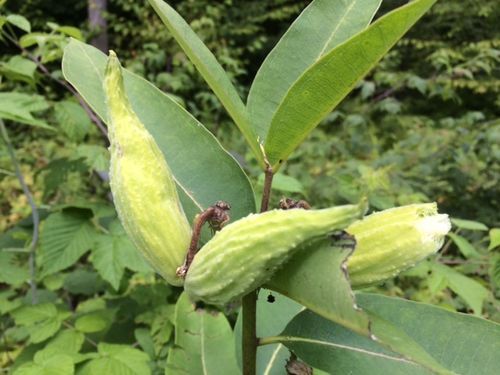
I took these milkweed pictures yesterday; my entire driveway is lined with milkweed plants.
The photographs are mine; the information comes from wildfoods.com, which no longer seems to be available online.
Flowers and Fruit
In midsummer the unopened flower buds can be gathered. They look like miniature heads of broccoli but are softer. Dice up a small handful of these and toss them into a soup, casserole, pasta dish, stuffing, or stir-fry to excellent effect. To eat larger servings of the flower buds alone, boil them, drain the water, and season. Many people consider this the best part of the milkweed plant. I think they taste almost identical to the shoots and the pods. There is one small warning that must be made with milkweed flower buds: sometimes they are full of tiny monarch caterpillars.
Usually the first milkweed flowers in northern Wisconsin appear in early July. The blossoming season is over a month long. The multicolored flowers have a sweet, musky odor and are a favorite of insects. I have read that certain Native American tribes boiled and mashed the flowers to form a kind of sweet sauce, but I have not had any success with this. I have eaten the flowers in small quantities raw, and they have a rather pleasant flavor.
As the flowers wither away, seed pods will form in their place along the upper parts of the stem. Even though a cluster contains dozens of flowers, it rarely ends up producing more than four or five seed pods. In a season, an average milkweed stalk produces only four to eight pods. They first appear about the size and shape of a teardrop. When fully grown they will be three to five inches long. Until they are about two-thirds grown the immature pods make a superb vegetable. The smallest pods, under an inch long and still firm, are most desirable. When the pods are fully formed they become tough and unpalatable and should not be eaten.
Milkweed pods are excellent in stew, stir-fry, or eaten as a vegetable side dish. They are delicious with cheese and bread crumbs. The pods can also be made into pickles, but they become soft after boiling.
The best time to gather milkweed pods is late summer (from early August to early September around here). The size of the pods varies greatly from one plant to the next. An immature pod on one specimen may be larger than a full-grown pod on another, so determining which pods are immature can be tricky. The pods that are too old tend to be rougher on the outside than the young pods. They also tend to have more pointed, curved tips. These are tendencies, not rules, however. There are a few more reliable ways to determine the age of pods.
There is a line running the length of each pod, along which it will split open to release its seeds when mature. If you pull apart on both sides of this line and it splits open easily, the pod is probably too old to use. For the beginner, it is best to open up several pods and examine the insides to get an idea of which ones are in the proper stage for harvesting. In an immature milkweed pod (one that can be eaten) all of the seeds will be completely white, without even a hint of browning. The silk should be soft and juicy, not fibrous. It should be easy to pinch through the bundle of silk or to pull it in half. Immature pods are also plumper and harder than mature ones. Don't let this seem more complicated than it really is - with time you will know, at a glance, which pods to collect.
A few times each season I gather a large quantity of milkweed pods. I work my way through my favorite patch and fill a cloth bag, which doesn't take very long, since milkweed often grows in large, prodigious colonies. I leave the tiny pods for next time, and ignore those that are questionably old. When I get home I sort through the pods, keeping all of those less than about 1.5 inches long to be eaten whole. If I do not use these immediately, I can or freeze them (after parboiling). Milkweed pods, after they are picked, begin to toughen in a few hours, and may become unpalatable in a day or less.
The immature pods which are more than 1.5 inches long are used to make a unique food product that is called milkweed white at our house. Milkweed white is simply the silk and soft white seeds from immature pods. I open up each pod, remove the white from the inside, and discard the rind. (The rind is actually edible, but I don't find myself having the appetite to eat all of it that is left over.) When raw, milkweed white is sweet and juicy. (I only eat small amounts of it raw, however.) When boiled, it has a mild, pleasant flavor and a chewy texture. Mixed with other foods, the boiled white looks, tastes, and behaves surprisingly like melted cheese. In fact, most people assume that it is cheese until I tell them otherwise. I often add this boiled silk to rice, pasta, casseroles, and soup, and it has never disappointed me. (It will disappoint you, however, if you expect it to be exactly like cheese.)
The lowly common milkweed provides two different useful kinds of fiber (stalk fiber and silk), plus six different vegetables (shoots, leafy tops, flower buds, flowers, immature pods, and white). It is abundant, easy to recognize, familiar to many of us, and is a perennial that appears in the same place year after year. It's blossoms feed numerous kinds of butterflies, including our most beloved, as well as hummingbirds and honey bees. Pretty amazing, huh?
For a really useful post on milkweed, try this one from Forager's Harvest.
Ruth Reichl's Blog
- Ruth Reichl's profile
- 2980 followers


